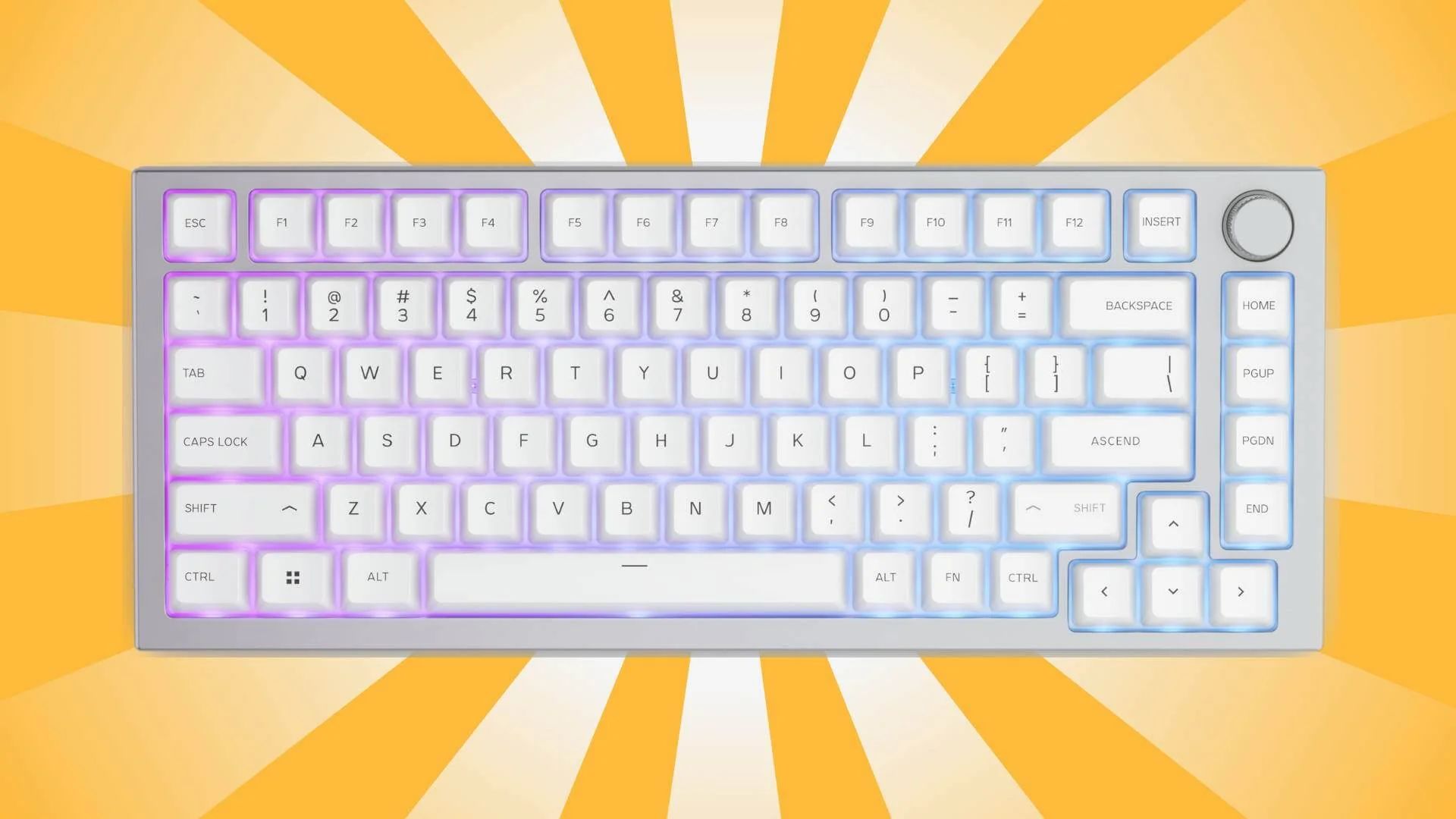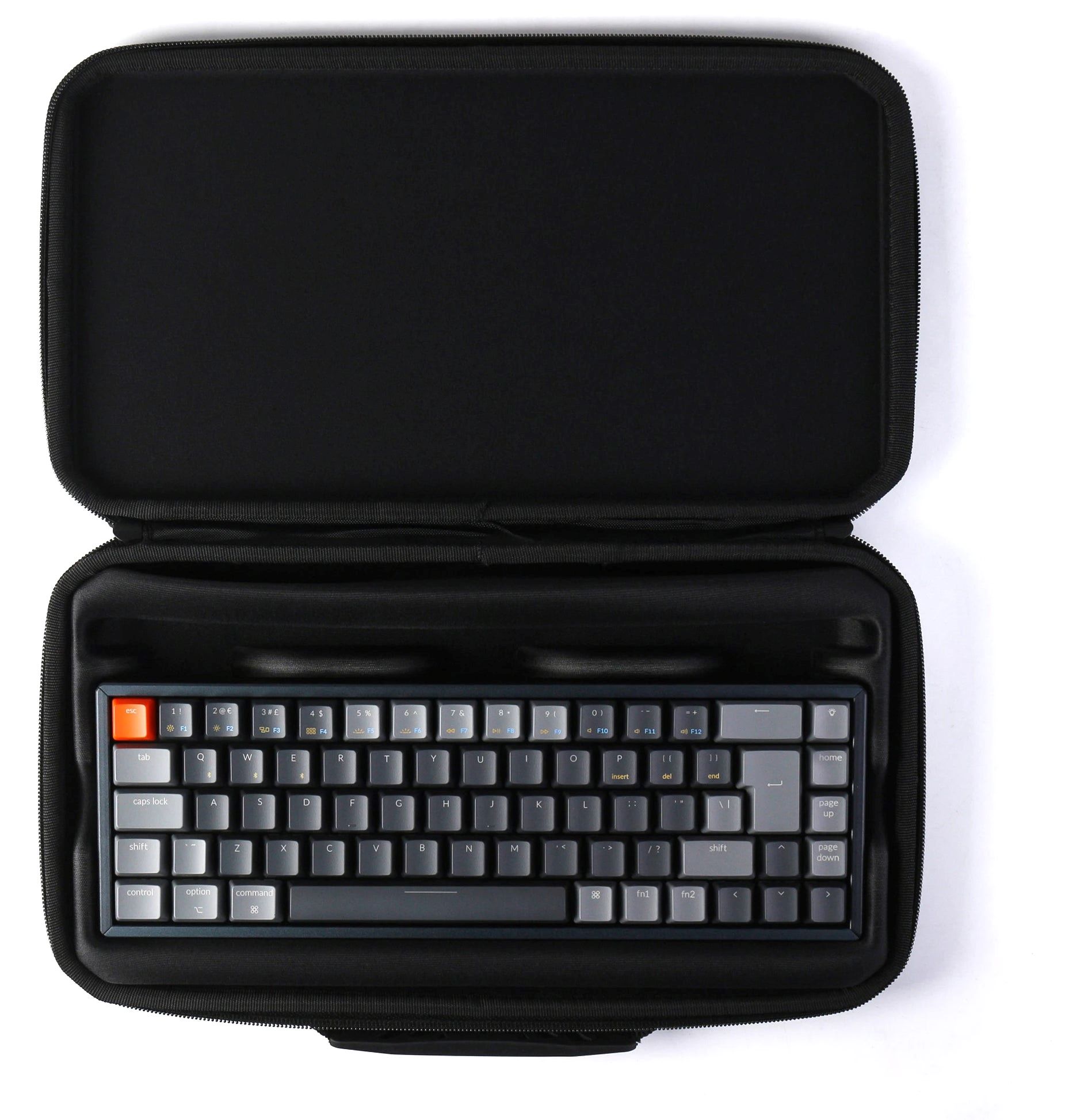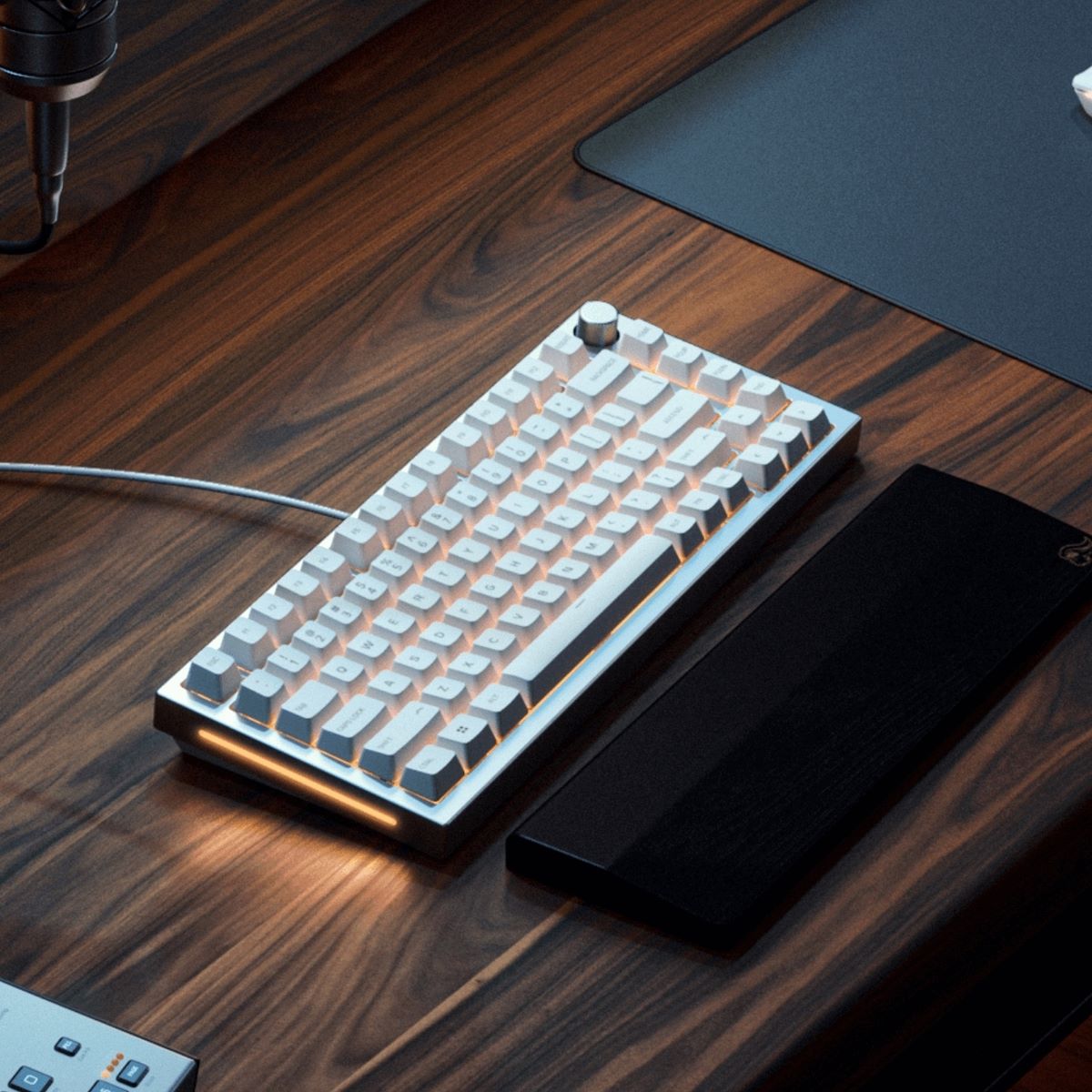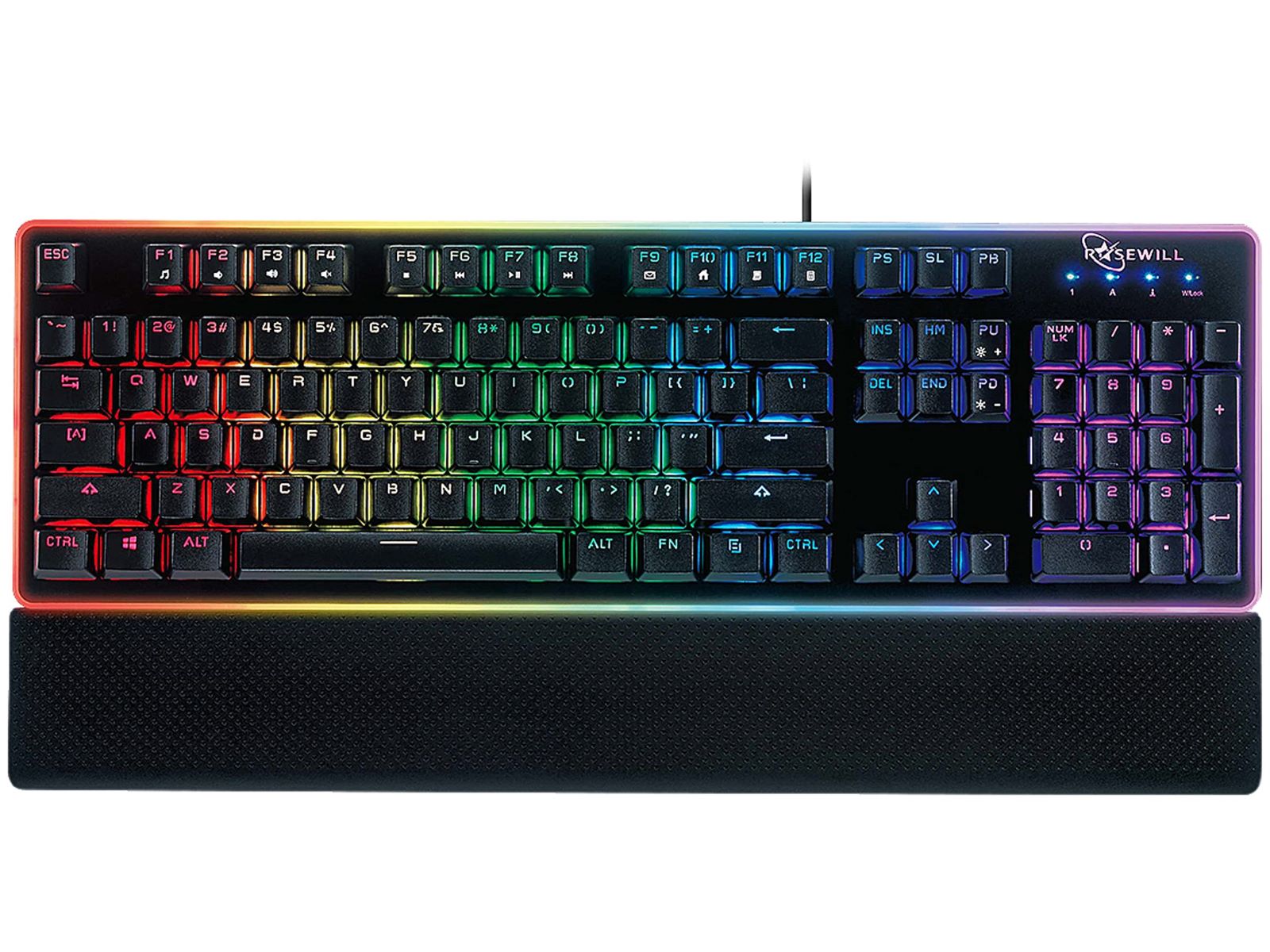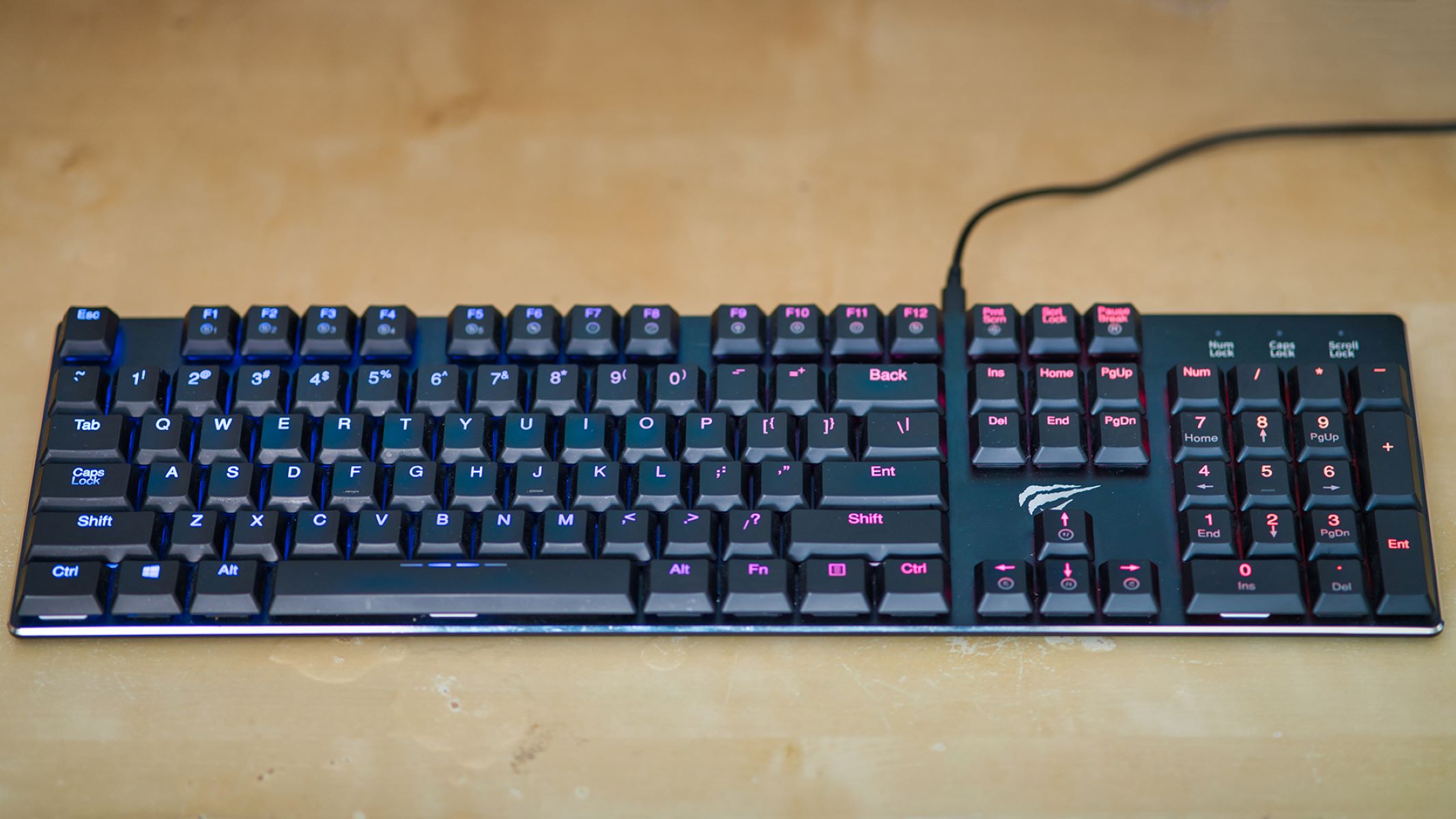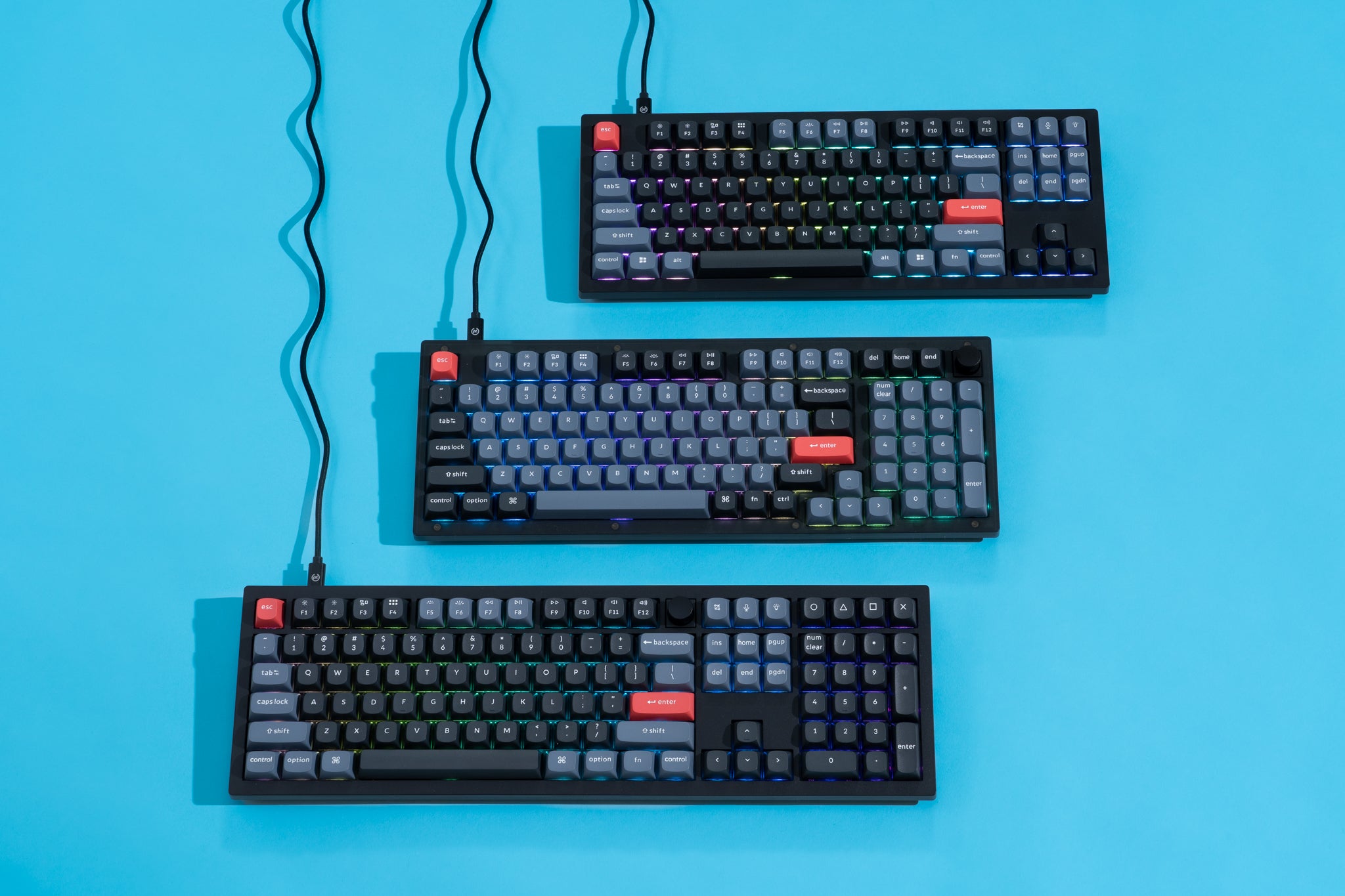Introduction
A 75% keyboard is a compact and versatile option for those seeking a balance between functionality and space-saving design. With a smaller form factor than a traditional full-sized keyboard, a 75% keyboard provides an ergonomic typing experience while conserving desk space.
As technology continues to evolve and demand for efficient devices grows, many users are opting for compact keyboards that offer a streamlined user experience without compromising on important features. In this article, we will explore the key features of a 75% keyboard and delve into the number of keys it has, as well as its advantages and disadvantages.
Whether you are a programmer, writer, or avid gamer, the right keyboard can significantly impact your productivity and comfort while using a computer. The 75% keyboard offers a middle ground between compact keyboards like the 60% and the more traditional full-sized keyboards, making it an appealing choice for a wide range of users.
In the following sections, we will delve into the details of a 75% keyboard, explore its key layout, functionality, and discuss some popular options available in the market. By the end of this article, you will have a comprehensive understanding of what a 75% keyboard is and whether it is the right choice for you.
What is a 75% keyboard?
A 75% keyboard is a compact keyboard layout that strikes a balance between portability and functionality. It is smaller than a traditional full-sized keyboard but larger than the ultra-compact 60% keyboards. The term “75%” refers to the approximate size of the keyboard compared to a full-sized layout.
One of the defining characteristics of a 75% keyboard is the elimination of the row containing the function keys (F1 to F12) and the number pad on the right-hand side. This reduction in size allows for a more streamlined and space-saving design without sacrificing important functionality.
The layout of a 75% keyboard typically consists of four main sections:
- Main Key Area: This area includes the standard alphanumeric keys, punctuation marks, and modifier keys such as Shift, Ctrl, and Alt. It is similar to the layout of a full-sized keyboard but with a more compact arrangement.
- Arrow Cluster: The arrow keys are usually grouped together in an inverted T-shape or a compact row. This allows for easy navigation without the need for a dedicated number pad.
- Function Row: Instead of having a dedicated row for function keys, a 75% keyboard often integrates the function keys into the number row. These keys can be accessed by holding down the Fn key in combination with the corresponding number key.
- Navigation Cluster: This section includes the essential keys for navigation purposes, such as Home, End, Page Up, and Page Down. They are typically located above the arrow keys or in close proximity.
By reducing the size of the keyboard while still retaining important keys, a 75% keyboard offers a compact and efficient typing experience. It strikes a balance between the increased functionality of a full-sized keyboard and the space-saving advantages of a more compact layout.
Next, we will explore the specific number of keys typically found on a 75% keyboard and discuss their functionality in more detail.
Key Layout of a 75% keyboard
The key layout of a 75% keyboard is designed to provide users with a compact yet functional typing experience. While the specific layout may vary slightly among different manufacturers, there are some standard features and key placements that are commonly found on most 75% keyboards.
Here are the key components that you can expect to find on a typical 75% keyboard:
- Alphanumeric Keys: The main section of the keyboard contains the standard alphanumeric keys, including the letters of the alphabet, numbers, and special characters.
- Modifier Keys: 75% keyboards include the standard modifier keys such as Shift, Ctrl, and Alt, which are essential for executing various keyboard shortcuts and commands.
- Arrow Keys: The arrow keys are usually compactly arranged in an inverted T-shape or arranged as a compact row. These keys allow for easy navigation within documents or web pages without the need for a dedicated number pad.
- Function Keys: In place of a dedicated row for function keys (F1 to F12), a 75% keyboard integrates these keys into the number row. By holding down the Fn key along with the corresponding number key, you can access the function keys.
- Navigation Cluster: The navigation cluster typically consists of keys such as Home, End, Page Up, and Page Down. These keys play a crucial role in efficient navigation through documents and web pages.
- Media Controls: Many 75% keyboards also feature dedicated media control keys for adjusting volume, playing/pausing music, and skipping tracks. These keys provide convenient access to multimedia functions without the need for additional software or key combinations.
- Customizable Keys: Some 75% keyboards offer programmable keys that allow you to customize their functions according to your specific needs. This feature can be particularly useful for gamers or individuals who rely heavily on macros and shortcuts.
The specific placement and arrangement of these keys may vary from one 75% keyboard model to another, so it’s important to familiarize yourself with the layout of the specific keyboard you plan to use. Overall, the key layout of a 75% keyboard provides a compact and efficient typing experience, making it a popular choice for those seeking a balance between functionality and space-saving design.
How many keys does a 75% keyboard have?
A 75% keyboard typically has around 83 to 87 keys, depending on the specific layout and manufacturer. While the exact number of keys may vary slightly, the key count is substantially lower compared to a full-sized keyboard.
Here is a breakdown of the key distribution on a standard 75% keyboard:
- Main Key Area: This section includes the alphanumeric keys, punctuation marks, and modifier keys. The main area resembles the layout of a full-sized keyboard but in a more compact design.
- Arrow Cluster: The arrow keys are usually grouped together, either in an inverted T-shape or a compact row. This allows for easy navigation without the need for a dedicated number pad.
- Function Row: Instead of having a separate row for function keys (F1 to F12), a 75% keyboard integrates these keys into the number row. These function keys can be accessed by holding down the Fn key along with the corresponding number key.
- Navigation Cluster: This section includes keys for navigation purposes, such as Home, End, Page Up, and Page Down. They are typically positioned above the arrow keys or in close proximity.
- Other Keys: Depending on the specific model, a 75% keyboard may also include multimedia control keys for adjusting volume, playing/pausing music, and skipping tracks. Some keyboards may also have programmable keys that can be customized according to your needs.
The compact size of a 75% keyboard allows for the elimination of the number pad and function key row, which contributes to its reduced key count. While the removal of these keys may initially seem like a limitation, most users find that the essential keys required for day-to-day tasks are still present.
It’s important to note that the specific key distribution and placement may vary among different 75% keyboards, so it’s advisable to review the layout of the particular keyboard model you are interested in before making a purchase.
Overall, a 75% keyboard strikes a balance between functionality and space-saving design by providing a sufficient number of keys for most common tasks, making it a popular choice for those seeking a compact yet efficient typing experience.
Functionality of the different keys
A 75% keyboard may have a reduced number of keys compared to a full-sized keyboard, but it still provides all the essential functionality needed for efficient typing and navigation. Let’s explore the functionality of the different keys found on a typical 75% keyboard:
- Alphanumeric Keys: The main key area comprises the alphanumeric keys, including letters, numbers, and special characters. These keys allow you to type out text and input alphanumeric characters into documents, emails, or any other text-based application or interface.
- Modifier Keys: Modifier keys such as Shift, Ctrl, and Alt are crucial for executing various keyboard shortcuts and commands. They play a vital role in capitalizing letters, selecting text, copying and pasting, and navigating between applications or documents.
- Arrow Keys: The arrow keys on a 75% keyboard provide easy navigation within web pages, documents, or spreadsheets. They allow you to move the cursor up, down, left, or right without the need for a dedicated number pad.
- Function Keys: The function keys on a 75% keyboard are usually integrated into the number row, accessible by holding down the Fn key in combination with the corresponding number key. These keys have a variety of functions, including controlling brightness, adjusting volume, activating screen capture, or launching specific applications.
- Navigation Cluster: The navigation cluster includes keys such as Home, End, Page Up, and Page Down. These keys assist in quickly navigating through documents or web pages, allowing you to move to the beginning or end of a document, scroll up or down, or jump between pages.
- Media Controls: Many 75% keyboards feature dedicated media control keys for adjusting volume, playing/pausing music, and skipping tracks. These keys provide convenient access to multimedia functions, enhancing your overall media consumption experience.
- Customizable Keys: Some 75% keyboards offer programmable keys that allow you to assign specific functions or macros to them. This feature is especially useful for gamers or individuals who rely on repetitive commands or shortcuts for their work.
While a 75% keyboard may have a reduced number of keys, it still provides all the necessary functionality required for most common tasks. The compact design encourages efficient typing and navigation, without sacrificing essential functions. Whether you are a programmer, writer, or casual computer user, the keys found on a 75% keyboard offer a seamless and intuitive typing experience.
Advantages of using a 75% keyboard
Using a 75% keyboard comes with several advantages, making it a popular choice among individuals who value a compact and efficient typing experience. Let’s explore the key advantages of using a 75% keyboard:
- Space-saving design: The compact size of a 75% keyboard allows for a more efficient use of desk space. It is an ideal option for those who have limited workspace or prefer a clutter-free setup.
- Ergonomic typing experience: With a reduced key count, a 75% keyboard promotes a more ergonomic typing posture. Your hands and arms can rest closer together, reducing strain and fatigue during long typing sessions.
- Efficient navigation: The inclusion of dedicated arrow keys and a navigation cluster on a 75% keyboard allows for seamless navigation within documents, web pages, or spreadsheets without the need for a dedicated number pad.
- Portability: The smaller size and lightweight design of a 75% keyboard make it highly portable. It is easy to carry in a backpack or laptop bag, making it a convenient option for professionals who frequently work on the go.
- Streamlined layout: The absence of the number pad and function key row on a 75% keyboard results in a more streamlined and minimalist layout. This can lead to increased efficiency and reduced finger movement for tasks such as data entry or coding.
- Customization options: Many 75% keyboards offer programmable keys or customizable backlighting options. This allows users to tailor the keyboard to their specific needs, whether it’s programming macros, assigning shortcuts, or creating personalized lighting effects.
- Compatibility: 75% keyboards are designed to be compatible with various operating systems, including Windows, macOS, and Linux. They can be easily connected to laptops, desktops, or even mobile devices, making them versatile and adaptable to different setups.
Overall, a 75% keyboard provides a balance between functionality and space-saving design. It offers an ergonomic typing experience, efficient navigation, and portability, making it an appealing choice for professionals, gamers, and anyone seeking a compact and versatile keyboard solution.
Disadvantages of using a 75% keyboard
While 75% keyboards have many advantages, there are also a few potential disadvantages to consider before making a decision. Here are some of the drawbacks of using a 75% keyboard:
- Learning curve: Transitioning from a full-sized keyboard to a 75% keyboard may require an adjustment period. The smaller form factor and rearranged keys can take some time to get used to, especially if you are accustomed to the layout of a traditional keyboard.
- Less functionality: Due to their reduced size, 75% keyboards often lack dedicated number pads and function key rows. This can be inconvenient for tasks that heavily rely on these keys, such as data entry or software shortcuts that utilize function keys extensively.
- Limited key customization: While some 75% keyboards offer programmable keys, the level of customization may not be as extensive as larger keyboard options. This can be a drawback for users who heavily rely on macros or need a higher level of key versatility.
- Smaller key size: The compact design of a 75% keyboard means that the keys themselves are usually smaller compared to a full-sized keyboard. This may result in a slightly cramped feeling for individuals with larger hands or those who prefer a more spacious key layout.
- Limited availability: While 75% keyboards have gained popularity in recent years, the range of options may still be more limited compared to full-sized or other compact keyboard designs. This can make it challenging to find a specific model that fits your preferences or specific requirements.
It’s important to weigh these disadvantages alongside the advantages to determine if a 75% keyboard is the right choice for your specific needs. While they may have some limitations, the majority of users find that the benefits of compact design and improved ergonomics outweigh the potential drawbacks.
Popular 75% keyboards in the market
As the popularity of compact and space-saving keyboards continues to rise, several 75% keyboards have gained recognition for their aesthetics, functionality, and build quality. Here are some of the popular 75% keyboards available in the market:
- Keychron K2: The Keychron K2 is a wireless mechanical keyboard that offers a compact 75% layout with a retro-style design. It features a hot-swappable PCB, allowing users to easily switch between different mechanical switches based on their preferences.
- Ducky One 2 Mini: Known for its exceptional build quality, the Ducky One 2 Mini is a compact 75% keyboard that features a detachable USB-C cable and RGB lighting options. It offers a customizable layout and comes with Cherry MX switches.
- Anne Pro 2: The Anne Pro 2 is a compact wireless keyboard that combines a minimalist design with customizable RGB lighting effects. It offers a variety of switch options, including Gateron and Kailh switches, and has programmable keys for added versatility.
- Varmilo VA68M: The Varmilo VA68M is a well-regarded 65% keyboard that comes close to the 75% layout. It is known for its exceptional build quality, customizable keycaps, and a wide range of switch options available.
- Drop ALT: The Drop ALT is a premium compact keyboard offered by Drop (formerly Massdrop). It features a sturdy aluminum frame, customizable RGB lighting, and hot-swappable switches, allowing users to easily customize the typing experience.
These are just a few examples of the popular 75% keyboards available in the market. Each of these keyboards offers different features, switch options, and customization possibilities, catering to a diverse range of user preferences.
When choosing a 75% keyboard, it’s important to consider factors such as build quality, switch type, customization options, and connectivity. Additionally, reading reviews and comparing different models can help you make an informed decision based on your specific needs and preferences.
Conclusion
75% keyboards offer a compelling middle ground between the compactness of smaller keyboards and the functionality of their larger counterparts. These keyboards, with their space-saving designs and efficient layouts, have gained popularity among a wide range of users, including professionals, gamers, and enthusiasts.
In this article, we explored the key features and advantages of using a 75% keyboard. We discussed how a 75% keyboard provides a compact and streamlined typing experience, while still retaining essential keys for efficient navigation and productivity. The ergonomic benefits, portability, and customization options further contribute to their appeal.
That being said, it’s important to consider the potential drawbacks associated with 75% keyboards, such as the learning curve for adjusting to the layout, limited functionality for tasks that rely heavily on function keys or number pads, and the smaller size of the keys themselves. However, most users find that the benefits outweigh these drawbacks.
When looking for a 75% keyboard, popular options like the Keychron K2, Ducky One 2 Mini, Anne Pro 2, Varmilo VA68M, and Drop ALT offer a combination of aesthetic appeal, build quality, customization options, and switch choices.
In conclusion, if you value a compact and efficient typing experience, a 75% keyboard can be a great choice. It provides the essentials without sacrificing functionality or portability. Evaluate your specific needs, preferences, and budget in order to find the right 75% keyboard that suits your workflow and enhances your overall typing experience.









